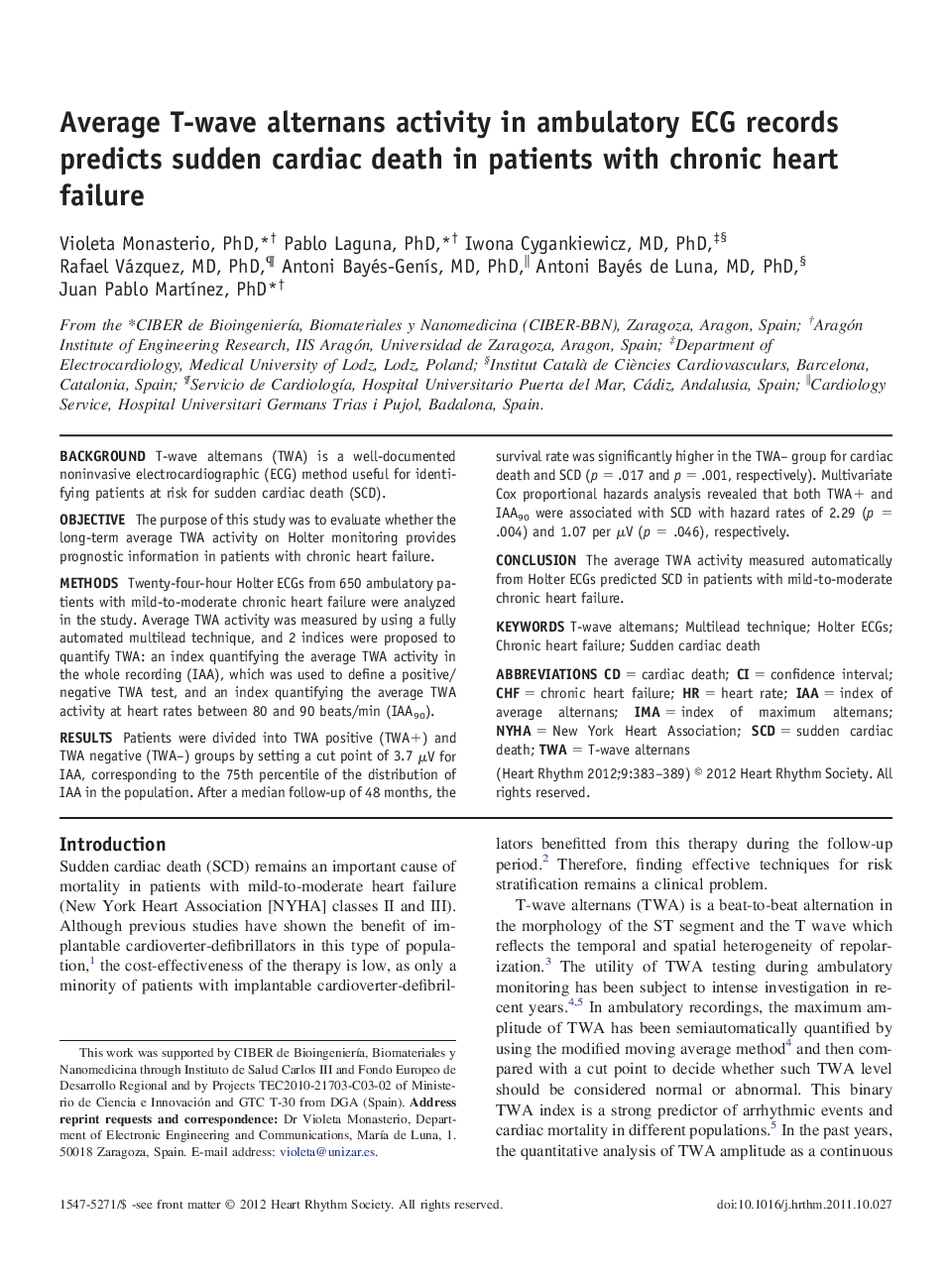| Article ID | Journal | Published Year | Pages | File Type |
|---|---|---|---|---|
| 2922648 | Heart Rhythm | 2012 | 7 Pages |
BackgroundT-wave alternans (TWA) is a well-documented noninvasive electrocardiographic (ECG) method useful for identifying patients at risk for sudden cardiac death (SCD).ObjectiveThe purpose of this study was to evaluate whether the long-term average TWA activity on Holter monitoring provides prognostic information in patients with chronic heart failure.MethodsTwenty-four-hour Holter ECGs from 650 ambulatory patients with mild-to-moderate chronic heart failure were analyzed in the study. Average TWA activity was measured by using a fully automated multilead technique, and 2 indices were proposed to quantify TWA: an index quantifying the average TWA activity in the whole recording (IAA), which was used to define a positive/negative TWA test, and an index quantifying the average TWA activity at heart rates between 80 and 90 beats/min (IAA90).ResultsPatients were divided into TWA positive (TWA+) and TWA negative (TWA–) groups by setting a cut point of 3.7 μV for IAA, corresponding to the 75th percentile of the distribution of IAA in the population. After a median follow-up of 48 months, the survival rate was significantly higher in the TWA– group for cardiac death and SCD (p = .017 and p = .001, respectively). Multivariate Cox proportional hazards analysis revealed that both TWA+ and IAA90 were associated with SCD with hazard rates of 2.29 (p = .004) and 1.07 per μV (p = .046), respectively.ConclusionThe average TWA activity measured automatically from Holter ECGs predicted SCD in patients with mild-to-moderate chronic heart failure.
